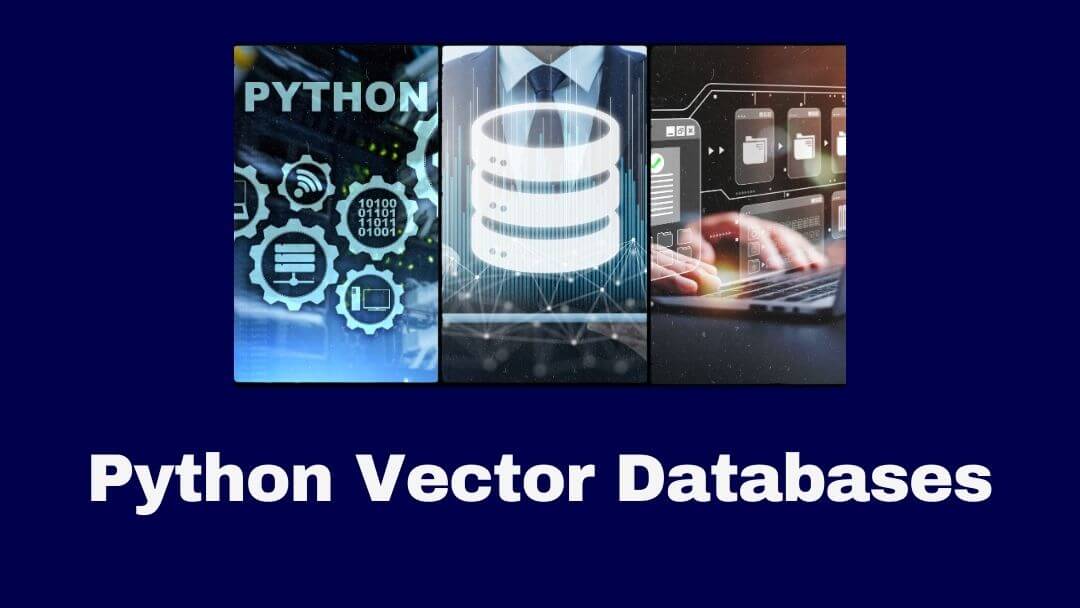Introduction
Python vector databases have quickly become one of the go-to solutions in data management and analysis, offering powerful storage and manipulation of vector data efficiently.
We delve deeper into their world here, giving a complete picture of their significance, capabilities, and practical applications.

Understanding Python Vector Databases
The vector databases are specialized databases designed to handle vector data efficiently.
As these systems excel at managing data that has geometric properties, they become indispensable tools in applications like geographical information systems (GIS), computer graphics, and machine learning.
Key Features of Python Vector Databases
The vector databases stand out from traditional databases in several key aspects:
- Efficient Geometry Storage: These databases are tailored for storing and retrieval of geometric data such as points, lines, and polygons. This efficiency is crucial when dealing with complex spatial data.
- Spatial Indexing: Python vector databases employ spatial indexing techniques to accelerate spatial queries. This ensures that operations like finding nearby points or polygons are performed swiftly, even with large datasets.
- Support for Geospatial Standards: Many Python vector databases adhere to geospatial standards such as the Simple Feature Specification. This ensures compatibility with a wide range of GIS applications and tools.
- Open-Source Options: There are various open-source the vector databases, such as PostGIS and GeoDjango, available that feature robust functionality as well as an active community of users and developers.
Popular Python Vector Databases
Let’s explore some of the most popular Python vector databases:
PostGIS
PostGIS is an open-source extension for the PostgreSQL database system. It adds support for geographic objects, allowing you to store and query spatial data seamlessly. With a rich set of functions, it is widely adopted in the GIS community.
GeoDjango
GeoDjango is a geographic web framework for Django, a popular Python web framework. It integrates seamlessly with Django, providing a high-level interface to work with spatial data.
This makes it an excellent choice for web applications with geospatial features.
SpatiaLite
SpatiaLite is an open-source spatial extension for SQLite that offers an easy way to add spatial capabilities to your SQLite databases – making it suitable for small projects or mobile apps.
Use Cases for Python Vector Databases
Now that we have gained an understanding of vector databases let’s investigate their practical applications:
Geographic Information Systems (GIS)
Python vector databases play a pivotal role in GIS applications.
They enable the storage and retrieval of geographic data, making it possible to create interactive maps, perform spatial analysis, and manage geospatial datasets efficiently.
Location-Based Services
Location-based services, such as ride-sharing apps and real-time navigation systems, heavily rely on Python vector databases.
These databases enable the quick and accurate retrieval of location data, ensuring smooth user experiences.
Computer Graphics
In the realm of computer graphics, Python vector databases find applications in rendering 2D and 3D graphics.
They store information about shapes, textures, and transformations, allowing for the creation of visually stunning visuals.
Machine Learning and AI

Python vector databases have become an indispensable asset in modern machine learning and artificial intelligence projects, offering a structured way of handling spatial data for tasks such as image recognition, object detection, and natural language processing.
Getting Started with Python Vector Databases
If you are eager to explore Python vector databases and leverage their capabilities, here is an essential roadmap to get you started:
- Choose the Right Database: Based on your project’s requirements, choose a Python vector database that best meets them. Keep in mind factors like scalability, performance, and community support when making this decision.
- Data Modeling: Plan how you will structure your spatial data. Design an efficient database schema that reflects the geometry and attributes of your objects.
- Data Loading: Populate your database with spatial data. This could involve importing shapefiles, GeoJSON files, or manually inputting data.
- Spatial Queries: Learn how to perform spatial queries using the chosen database. Understand the SQL or API commands required to retrieve and manipulate your data.
- Integration: If you are building a web application or incorporating spatial data into your projects, ensure seamless integration with your chosen database.
- Optimization: Explore optimization techniques to enhance the performance of your spatial queries. Indexing and proper database tuning are essential for large-scale applications.
Conclusion

Python vector databases offer a powerful solution for managing and analyzing spatial data efficiently.
No matter your project – be it GIS, location-based services, computer graphics, or machine learning applications – Python vector databases provide essential tools for managing complex geometric data.
By understanding their features and use cases, you can leverage their full potential and bring data-driven projects to new heights.
